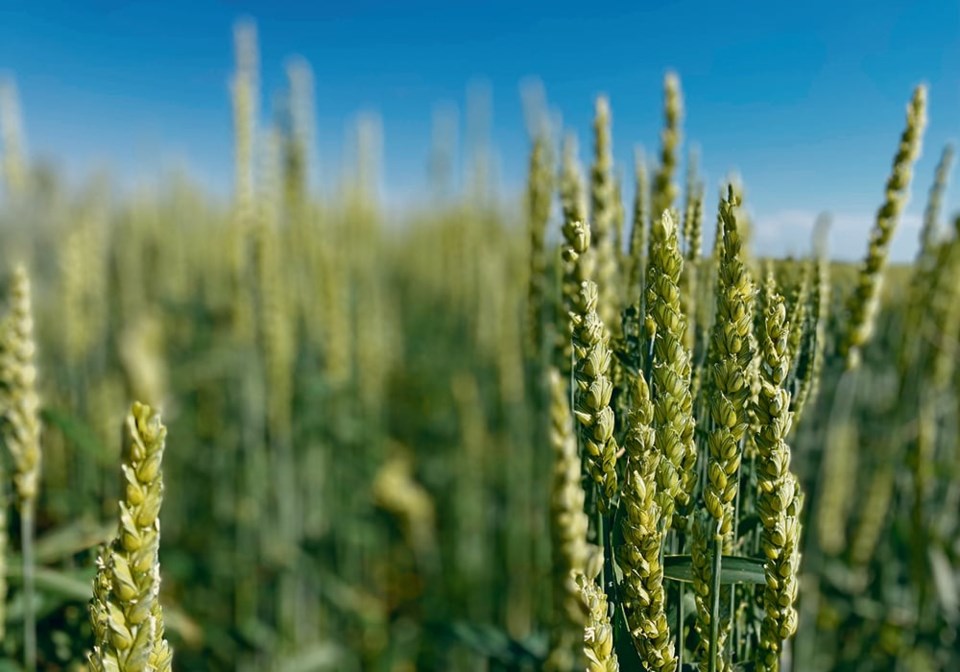WESTERN PRODUCER — Canadian farmers planted more wheat and canola in 2023, and that took a toll on some of the minor crops, say analysts.
Growers told Statistics Canada in this spring’s seeding intentions survey that they seeded 26.92 million acres of all wheat, the biggest crop since 2001.
They planted 22.08 million acres of canola, a 3.2 percent bump over last year.
MarketsFarm analyst Bruce Burnett thinks farmers opted for the mainstream crops because all crops are profitable these days, but the minor crops are harder to grow and sell.
He was particularly surprised by the lentil estimate of 3.67 million acres, a 15 percent drop from last year.
“That’s going to make the lentil situation pretty tight again here,” he said.
Burnett noted that it is dry in southwestern Saskatchewan, where many of the lentils are grown.
“You’ve got lower acres, plus probably some yield losses coming here if we don’t see some rains soon,” he said.
Farmers planted 3.04 million acres of peas, a 9.7 percent drop from last year. Dry bean plantings were up 6.8 percent to 318,000 acres after a 30 percent plunge the previous year.
Burnett said the pulses are developing quickly.
“Time is marching on rapidly here,” he said.
Brennan Turner, an independent agricultural consultant, said this year’s crop mix is reminiscent of one from decades ago.
“Is there a broader theme here?” he wondered.
“Are we trending back to that world where we’re going to see more wheat acres and maybe less of these specialized acres?”
He believes the answer to that question is a resounding “no.” Farmers were simply responding to the retraction in pea and lentil prices before seeding.
“At the end of the day money talks, and I think that’s basically what’s dictating some of these acreage responses,” said Turner.
Dry conditions in western and southern Saskatchewan probably exacerbated the switch from pulses to wheat.
“Some guys were just not necessarily willing to take the risk,” he said.
Burnett doesn’t put much faith in special crops numbers because the margin for error is high for small acreage crops.
For instance, mustard acreage shot up 15 percent to 637,000 acres. He thinks that might be over-stated.
“It’s a fairly dramatic increase,” he said.
But he agrees with the forecast for 316,000 acres of chickpeas, a 35 percent increase over last year. Farmers responded to strong international prices.
Burnett finds the canaryseed number of 256,000 acres a little puzzling. That would be a 12 percent drop from last year.
“If this is accurate, then canary is going to be extremely tight this year, given the stocks levels,” he said.
Flax is rapidly becoming a small-acreage crop. Farmers indicated they planted 609,000 acres of the oilseed, a 21.8 percent freefall from last year.
Burnett said that is hard to fathom given where prices are today, but the crop probably did lose some acres to canola.
Turner said the magnitude of the drop was a surprise to him as well, but farmers are no longer seeing $20 to $30 flax prices and it can be a headache to grow.
“Do I want to plant flax and potentially have to harvest it in the winter?” he said.
When it comes to the bigger acreage crops, there was no real market-moving information in the report.
The all wheat and durum acres remained nearly identical to what was forecast in the March seeding intentions report. The durum number is 6.03 million acres, or the same as last year.
Canola area is up nearly 700,000 acres compared to last year, but that is not a big jump for that crop.
Burnett believes canola’s gains came largely at the expense of oats, where acres plunged 35.6 percent year-on-year to 2.54 million acres. It is the smallest oat crop on record.
Barley is forecast at 7.32 million acres, which is right in line with the long-term average and four percent higher than last year.
Burnett thinks that sounds about right. It is a rebound from last year, when growers couldn’t get the crop in the ground because of planting problems in some areas of the Prairies.
Turner said feed prices have slumped, but there is still strong demand for Canadian barley.
“I’m still having a couple of barley sandwiches (during) the Canada Day long weekend,” he said.
Fall rye was pegged at 324,000 acres, a 17.6 percent drop from last year.
Farmers planted 3.83 million acres of corn, a 5.5 percent increase over last year, and 5.63 million acres of soybeans, a 6.8 percent jump.
Burnett believes that is due to improved seeding conditions in Ontario and Manitoba and strong prices for both commodities.
The June survey of approximately 25,000 farms was conducted from May 15 to June 12. Data on final acreages for 2023 will be released on Dec. 4 and will be subject to revision for two years.




